

#1 How Much of the Earth's Land Is Farmable? Janie Airey/Photodisc/Getty Images As the world’s population continues to grow, figuring out how much land is available to feed the ever-expanding population may become a vexing problem.

Vast quantities of land are already being used for various types of agriculture. Other tracts are available for farming but currently unused. Still other land simply isn’t suitable for farming altogether. Definition Differences. #2 How much of the world’s land would we need in order to feed the global population with the average diet of a given country? What if every MN farm applied fertilizer at the recommended rate? Minnesota Public Radio’s Elizabeth Dunbar recently covered an administrative hearing on the state’s proposed Groundwater Protection Rule.

Her question: Can Minnesota have clean water without regulating fertilizer? The answer: Even WITH fertilizer regulations, we won’t get to clean water. Here’s why. Current fertilizer use Minnesota’s Nutrient Reduction Strategy looks to reduce nitrogen pollution to our surface waters by 45 percent by 2040. Deforestation and Forest Degradation. Forests cover 31% of the land area on our planet.

They help people thrive and survive by, for example, purifying water and air and providing people with jobs; some 13.2 million people across the world have a job in the forest sector and another 41 million have a job that is related to the sector. Many animals also rely on forests. Eighty percent of the world's land-based species, such as elephants and rhinos, live in forests. Forests also play a critical role in mitigating climate change because they act as a carbon sink—soaking up carbon dioxide that would otherwise be free in the atmosphere and contribute to ongoing changes in climate patterns. But forests around the world are under threat, jeopardizing these benefits.
Can Farms and Forests Coexist? Use one of the services below to sign in to PBS: You've just tried to add this video to your Watchlist so you can watch it later.
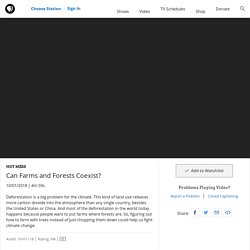
#3 Urban sprawl threatens prime farmland. In his long hours alone on a tractor, John Holtrop has become philosophical about how quickly the farmland around Toronto is disappearing.

Across the road from his corn, wheat and parsnip farm in Georgina, Ont., 50 kilometres north of Toronto, sprouting crops have been replaced by signs and sales offices for split-level homes. Mr. Holtrop wishes the developers well, but he worries that every year around Toronto another 2,500 hectares of some of Canada's most productive farmland is being covered by streets, homes and fast-food outlets. #4 Farmland Disappearing at an Alarming Rate. TAGS: Marketing, Overseas December 18, 2014 Around any large or mid-size city in America, one can find land that was previously rich, fertile farmland being bulldozed and segmented to make room for housing and/or commercial businesses.
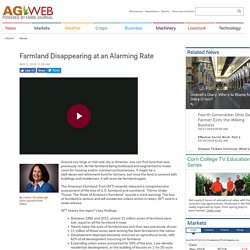
It might be a well-deserved retirement fund for farmers, but once the land is covered with buildings and residences, it will never be farmland again. #5 How Much Arable Land Is There? This question comes up frequently in discussions of farming practices – how much arable land is there on the Earth, and how much are we currently using?
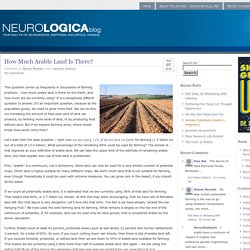
It is a deceptively difficult question to answer. It’s an important question, because as the population grows, we need to grow more food. #6 Countries With The Least Arable Land. Agricultural land refers to those portions of land that are either arable, under permanent pasture, or under permanent crop cover.
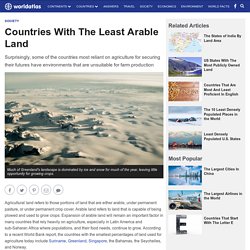
Arable land refers to land that is capable of being plowed and used to grow crops. Expansion of arable land will remain an important factor in many countries that rely heavily on agriculture, especially in Latin America and sub-Saharan Africa where populations, and their food needs, continue to grow. #7 What If the World’s Soil Runs Out? This is a “what if” interview from the World Economic Forum’s Risk Response Network.
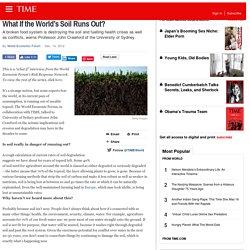
To view the rest of the series, click here. It’s a strange notion, but some experts fear the world, at its current pace of consumption, is running out of useable topsoil. The World Economic Forum, in collaboration with TIME, talked to University of Sydney professor John Crawford on the seismic implications soil erosion and degradation may have in the decades to come. Is soil really in danger of running out? A rough calculation of current rates of soil degradation suggests we have about 60 years of topsoil left. #8 Land Use - Uses Of The Land - Natural, Facilities, Types, and Systems - JRank Articles. #9 Solar RAC Mtg2 public comment. #10 Yields and Land Use in Agriculture. Empirical View Yields over the long-term Yields in the UK over the Long Run In the charts below, we see the average agricultural yield of particular crops over the long-term in the United Kingdom, from 1885 onwards.

In the first chart, we have plotted cereal crops (wheat, barley and oats). Overall, we see that improvements in cereal yields from the 19th century into the first half of the 20th century were relatively slow-- by the 1940s, yields were typically in the range of 2-2.5 tonnes per hectare. In the second chart below we see UK yields in sugar beet and potatoes--these roots and tuber crops tend to have much higher yields than cereal crops by mass (although they are likely to have a much higher percentage of water weight).
Click to open interactive version Wheat Yields across Europe from 1850 US average corn grain yields, 1866-2014.